Creating art projects using found objects can be a fun and rewarding way to express your creativity.
You can transform everyday items into unique pieces that reflect your own style and ideas.
This type of art not only sparks your imagination, but also promotes sustainability by repurposing discarded materials.
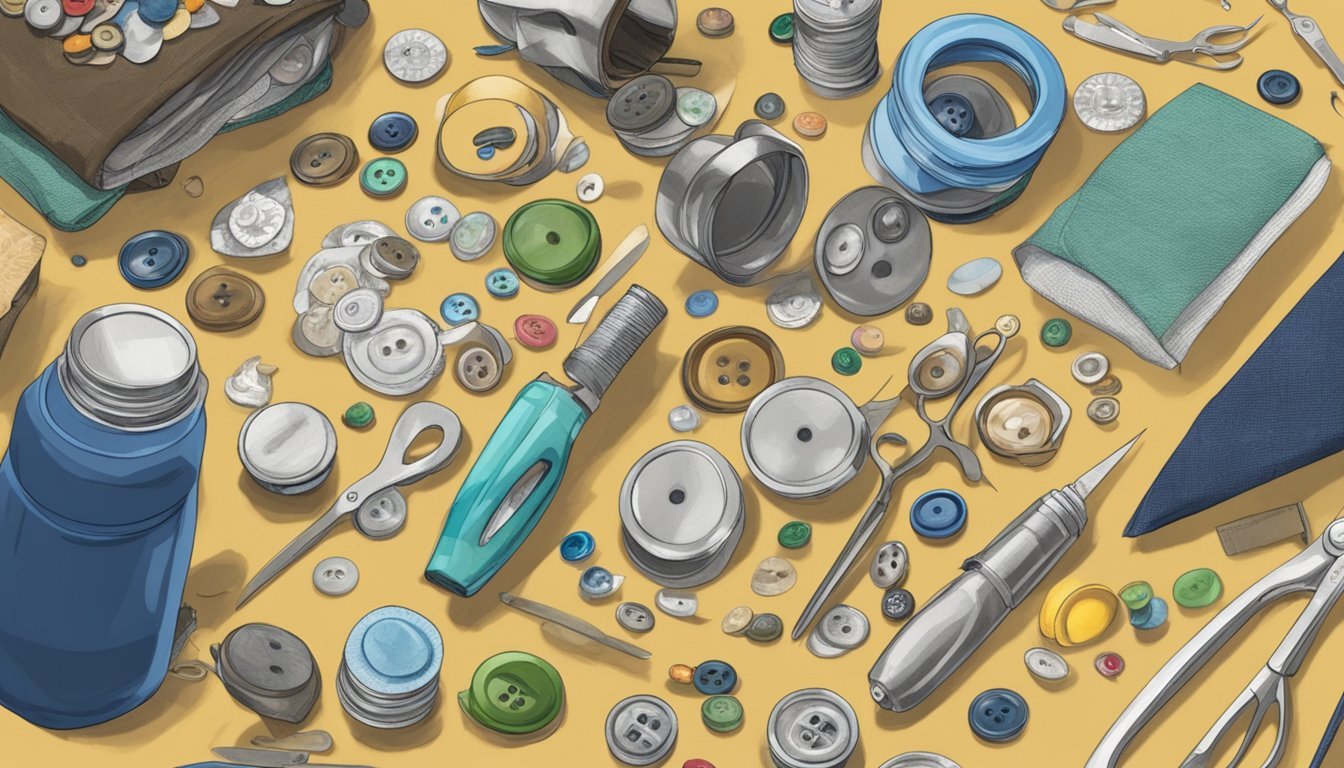
There’s a certain charm to art made from things that might otherwise be thrown away.
Whether you’re using bits of old toys, discarded furniture, or even natural materials, the possibilities are endless.
By seeing value in the overlooked, you can craft beautiful and meaningful artwork that tells a story.
Bottle Cap Mosaics
Creating bottle cap mosaics is a fun way to repurpose found objects.
You likely have some caps lying around from beverages you’ve enjoyed.
Collect a variety of shapes and colors to kick off your project.
Start by gathering different bottle caps.
The more diverse your selection, the more interesting your designs will be.
You can use caps from soda, beer, or even juice.
Next, choose a base for your mosaic.
A piece of wood or a canvas works great.
Arrange the caps on the surface without gluing them down first.
This lets you play with different patterns and designs.
Once you’re happy with your layout, it’s time to glue the caps in place.
Use a strong adhesive to ensure they stay put.
You can create geometric designs, abstract patterns, or even try to reproduce famous artworks—let your imagination run wild.
Finally, consider adding a clear finish to protect your masterpiece.
This will keep your bottle cap art looking fresh and vibrant for years to come.
Enjoy the process and have fun with your creativity!
Driftwood Sculptures
Creating driftwood sculptures can be a fun and rewarding way to use found objects.
The natural shapes and textures of driftwood inspire creativity.
Each piece is unique, making every sculpture a personal expression.
Start by gathering various pieces of driftwood.
Look for different sizes, shapes, and colors to give your art depth.
Once you have your materials, find a suitable workspace where you can arrange and experiment freely.
You can use natural wood glue or a hot glue gun to assemble your sculpture.
Play around with different orientations and combinations until something clicks.
Don’t be afraid to embrace the organic forms that driftwood offers.
Consider adding other elements, like shells or stones, to enhance your piece.
These can create contrast and add interest to the final sculpture.
Once completed, you can place your driftwood sculpture indoors or outdoors, as they can withstand the elements.
Enjoy the process and let your imagination guide you.
License Plate Collages
Creating collages with old license plates is a fun way to repurpose materials.
Each plate has its own character, adding a unique touch to your artwork.
Start by gathering various license plates.
You can often find these at thrift stores, flea markets, or even in your garage.
Choose colors and textures that appeal to you.
Next, decide on your base.
A sturdy board or canvas works well.
Arrange the plates to see how they fit together.
Don’t be afraid to layer them; overlapping plates can create interesting visual effects.
Once you have a layout you like, start attaching the plates.
Use strong adhesive or screws, depending on the thickness of the plates and your base.
You can also incorporate other materials, like paper, fabric, or paint, to enhance your collage.
This mix allows for added texture and interest.
Finally, find a suitable spot to display your creation.
License plate collages make for unique wall art that shows off your style and creativity.
Enjoy the process and let your imagination guide you!
Fused Glass Figures
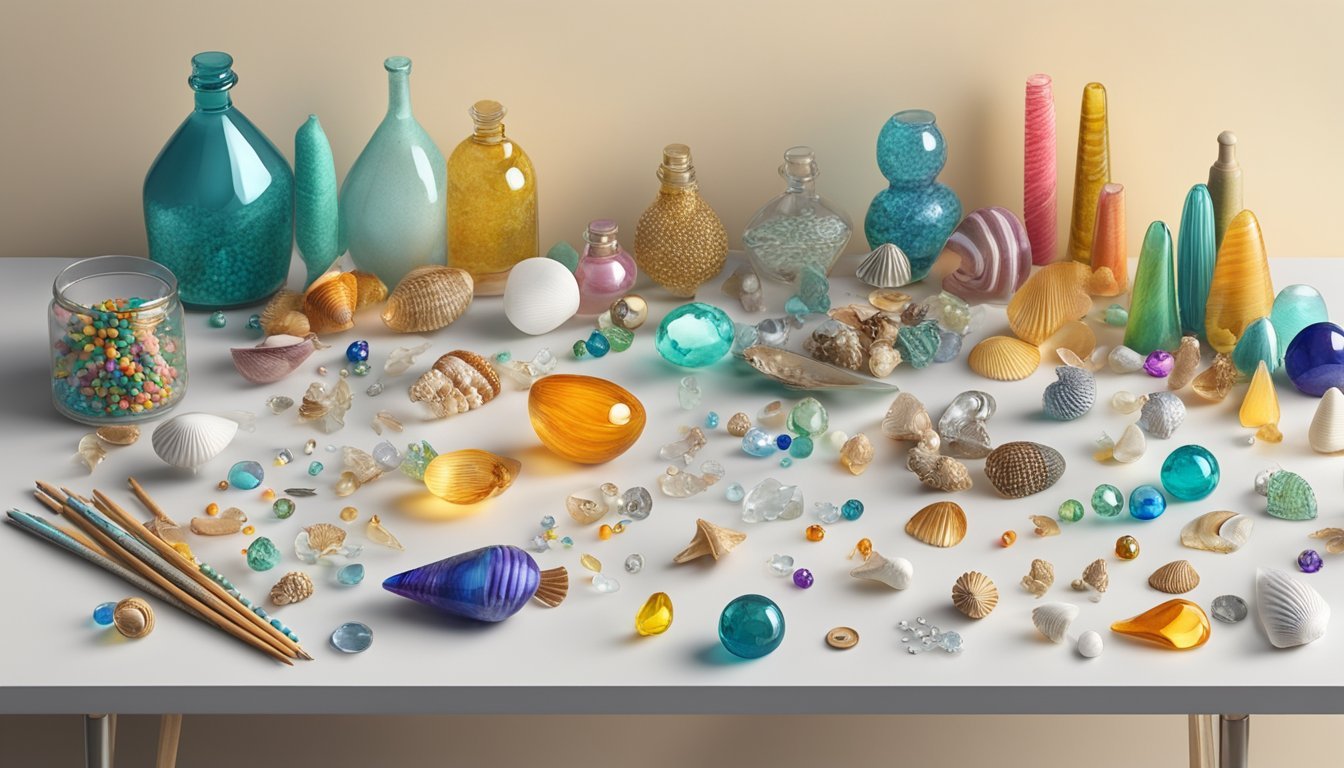
Creating fused glass figures can be a fun and rewarding project.
You can use different colors and shapes of glass to form unique three-dimensional sculptures.
Start by choosing your glass pieces.
Look for various colors and textures to give your figures personality.
Cut the glass into the desired shapes and layers; you might want to combine clear glass with colored glass for added visual depth.
Once you have your design ready, place the pieces in a kiln.
The firing will melt the glass, which fuses them into a single piece.
Make sure to follow the recommended temperature settings for the glass type you’re using.
After the glass has cooled, you’ll be surprised at how your figures come to life.
You can display them as standalone art or incorporate them into other projects.
Experimenting with shapes and colors can lead to endless creative possibilities.
Don’t forget to wear safety gear while cutting glass, and enjoy the process! Each piece you create is a reflection of your personal style.
5) Reclaimed Wood Wall Art
Creating wall art from reclaimed wood can add character to your space.
You can start by gathering pieces of wood from old furniture or pallets.
Look for unique textures and colors to give your art a distinctive touch.
To make the art project, consider framing the wood.
Use 1/2″x3/4″ pieces to create a simple frame that enhances your design.
Nail these pieces together in an L shape for stability.
Experiment with different arrangements.
You can layer the wood pieces or create geometric patterns.
Stenciling on the wood with paint can add a personal touch.
Use a simple design to keep it classy.
Another idea is to create functional art.
Transform wooden boxes into key holders or small shelves.
This way, your art doesn’t just look good but also serves a purpose.
Hanging your finished piece is easy.
Just measure carefully and use a level to ensure it’s straight.
Enjoy the process and let your creativity shine through your reclaimed wood wall art.
6) Old Book Page Origami
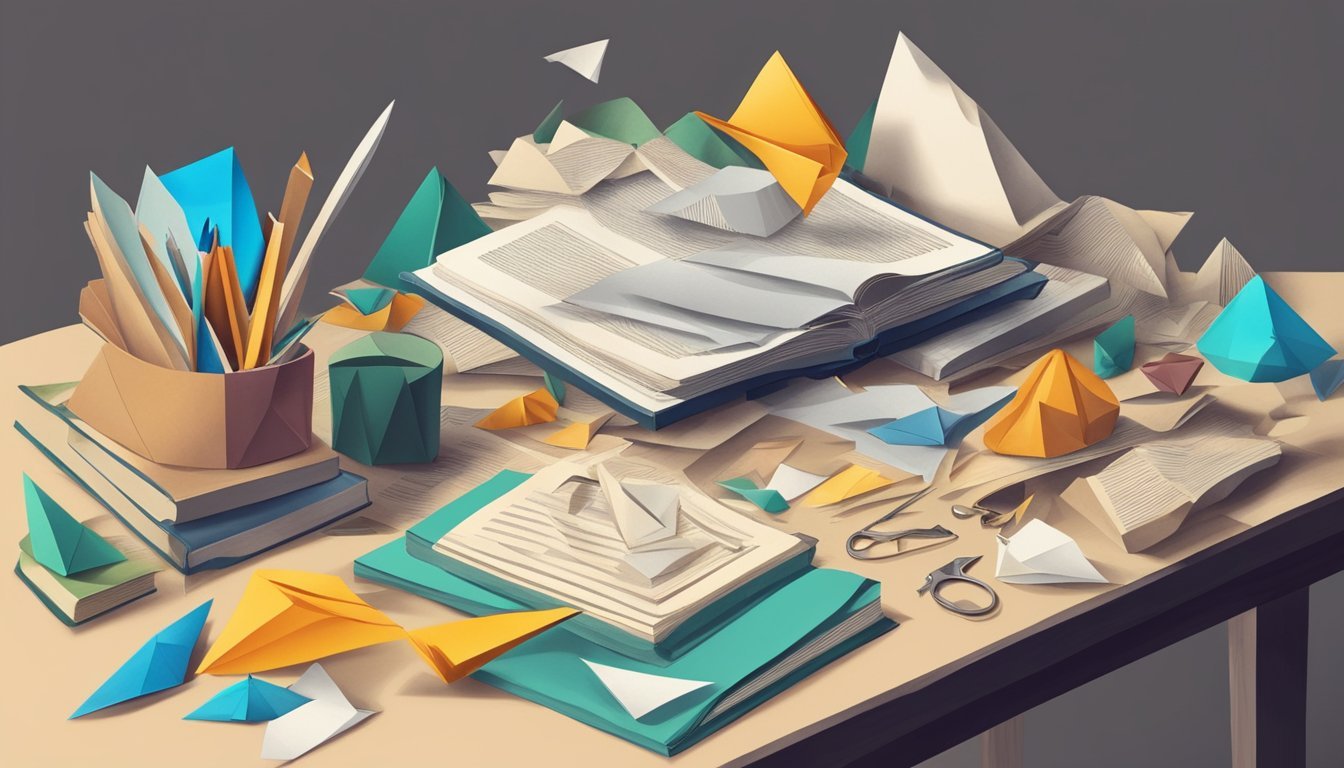
Using old book pages for origami is a fun and creative way to repurpose materials.
The text and patterns on the pages can add a unique touch to your folded creations.
Start with a clean, flat page.
If you’re feeling adventurous, choose pages with colorful illustrations or interesting text.
There are many simple origami designs to try, like cranes or boxes.
Follow easy online tutorials to learn the folds step by step.
Once you master the basics, you can experiment with more complex shapes or even design your own.
Consider creating paper flowers or even decorative ornaments for your space.
Don’t forget to incorporate your love of books into your projects.
Each fold can reflect a part of the story or theme behind the book you’re using.
This not only gives new life to old pages but also creates memorable art pieces that can provoke thought and nostalgia.
Enjoy the process and let your creativity flow!
7) Aluminum Can Jewelry
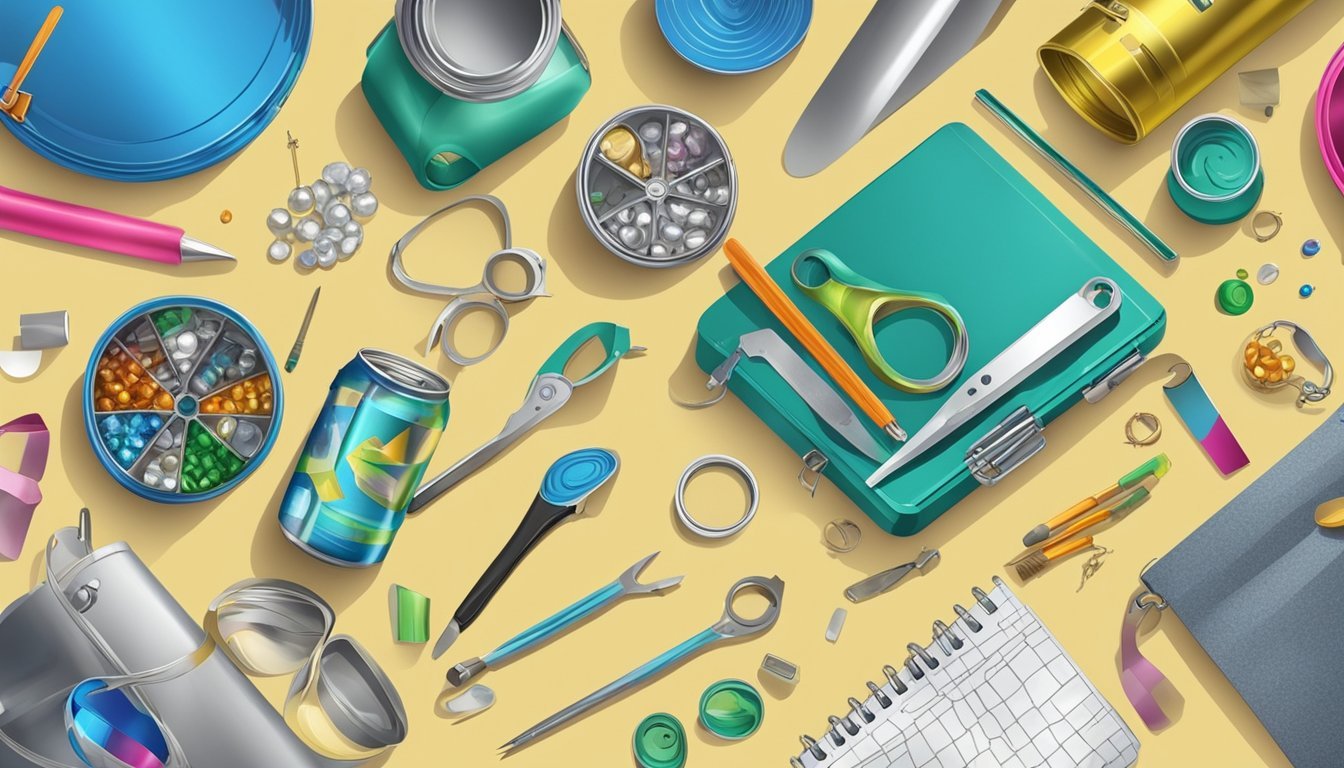
Creating jewelry from aluminum cans is a fun and eco-friendly project.
You can turn everyday items into unique accessories with just a few tools.
Start by gathering your materials.
You’ll need empty soda or beer cans, scissors or tin snips, and some basic jewelry supplies like jump rings and earring hooks.
Cut the cans to make shapes for your jewelry pieces.
Be careful with the edges, as they can be sharp.
You can create earrings, bracelets, or necklaces, depending on your design.
Use jump rings to attach your cut-out shapes together or to link them to earring hooks.
Personalize your pieces by painting or layering different can designs for a pop of color.
This project not only recycles materials but also lets you express your creativity.
Soon, you’ll have a collection of one-of-a-kind jewelry that showcases your style while helping the planet.
8) Vintage Button Portraits
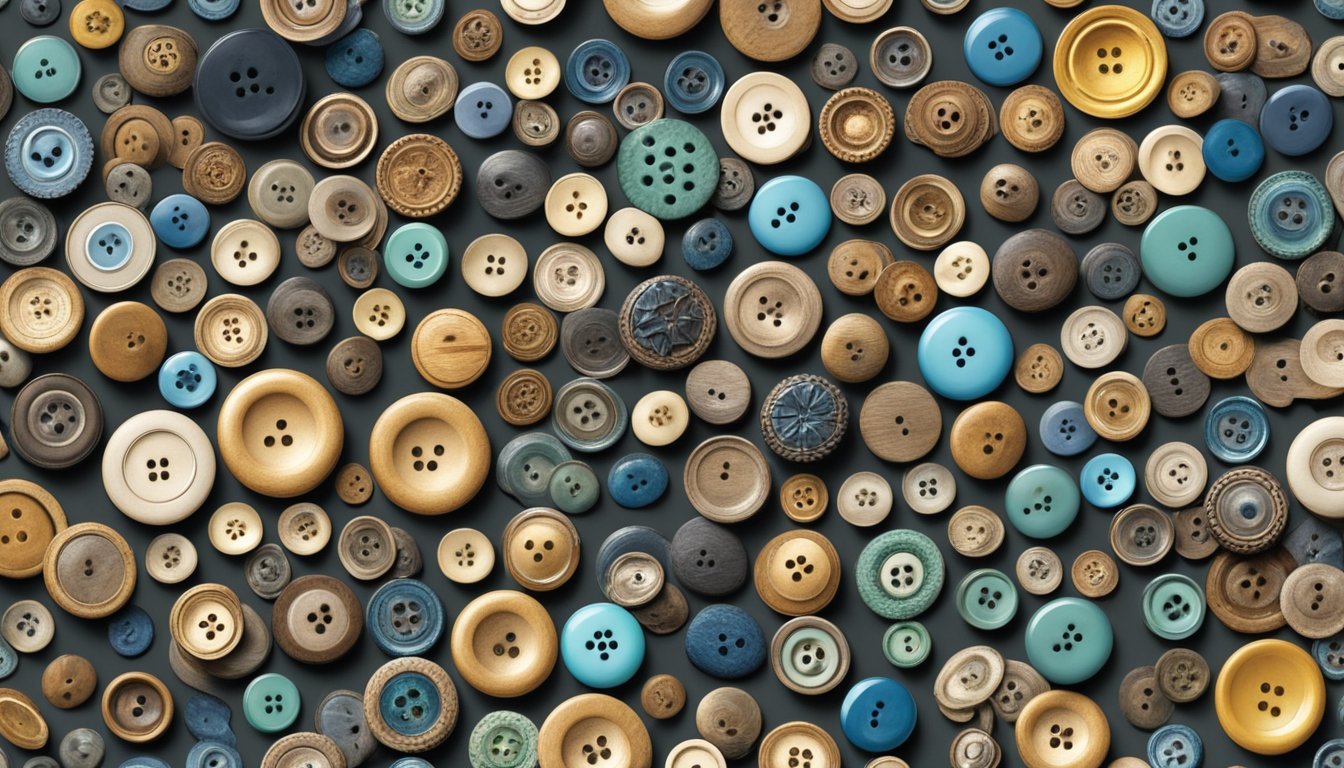
Creating vintage button portraits can be a fun and rewarding project.
Gather a variety of buttons in different shapes, sizes, and colors.
Thrift stores and family collections are great places to find unique buttons.
Start by sketching a simple outline of the portrait you want to create.
Use a canvas or sturdy paper as your base.
Position the buttons within your outline and experiment with different arrangements.
Once satisfied with the layout, glue the buttons in place.
You can overlap some buttons for a more dynamic look.
This technique adds depth and interest to your portrait.
Feel free to incorporate other found objects like fabric scraps or small charms.
These elements can enhance your design and give it a personal touch.
When completed, these portraits can serve as charming decor or heartfelt gifts.
9) Sea Glass Sun Catchers
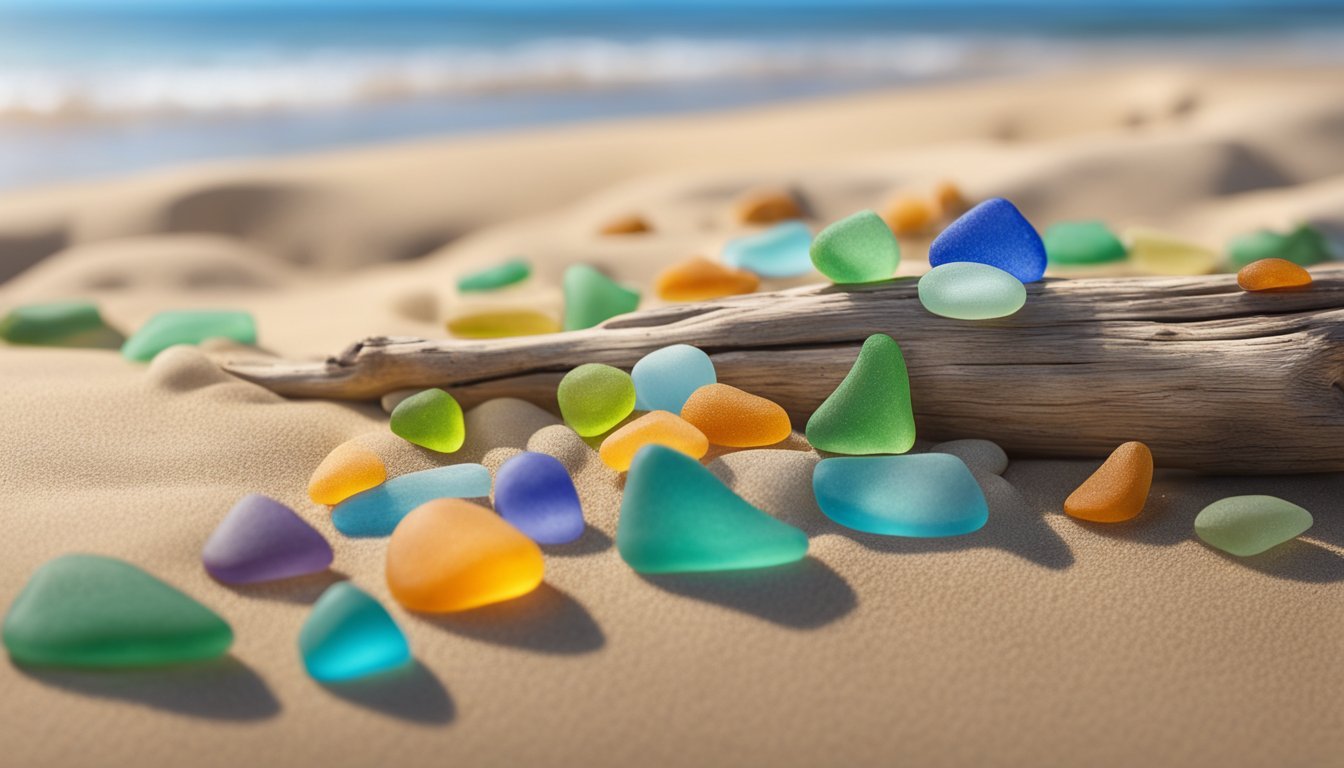
Creating sea glass sun catchers is a fun way to showcase your found treasures.
You can start by gathering assorted pieces of sea glass in different colors.
Next, find a sturdy base to hold your design, like a piece of wood or a tile.
Arrange your sea glass pieces creatively and secure them with adhesive.
For a more structured approach, you can use PVA glue in a mold.
Once it dries, you can carefully pop it out and pierce a hole at the top.
Don’t forget to thread a string through the hole.
Hang your sun catcher in a window to catch the sunlight.
When the sun shines through, the colors will create a beautiful display.
These projects are perfect for adding charm to your home or garden.
You can also get creative and incorporate other materials, like metal rods or old bottles, for added flair.
Discarded Board Game Pieces Creations
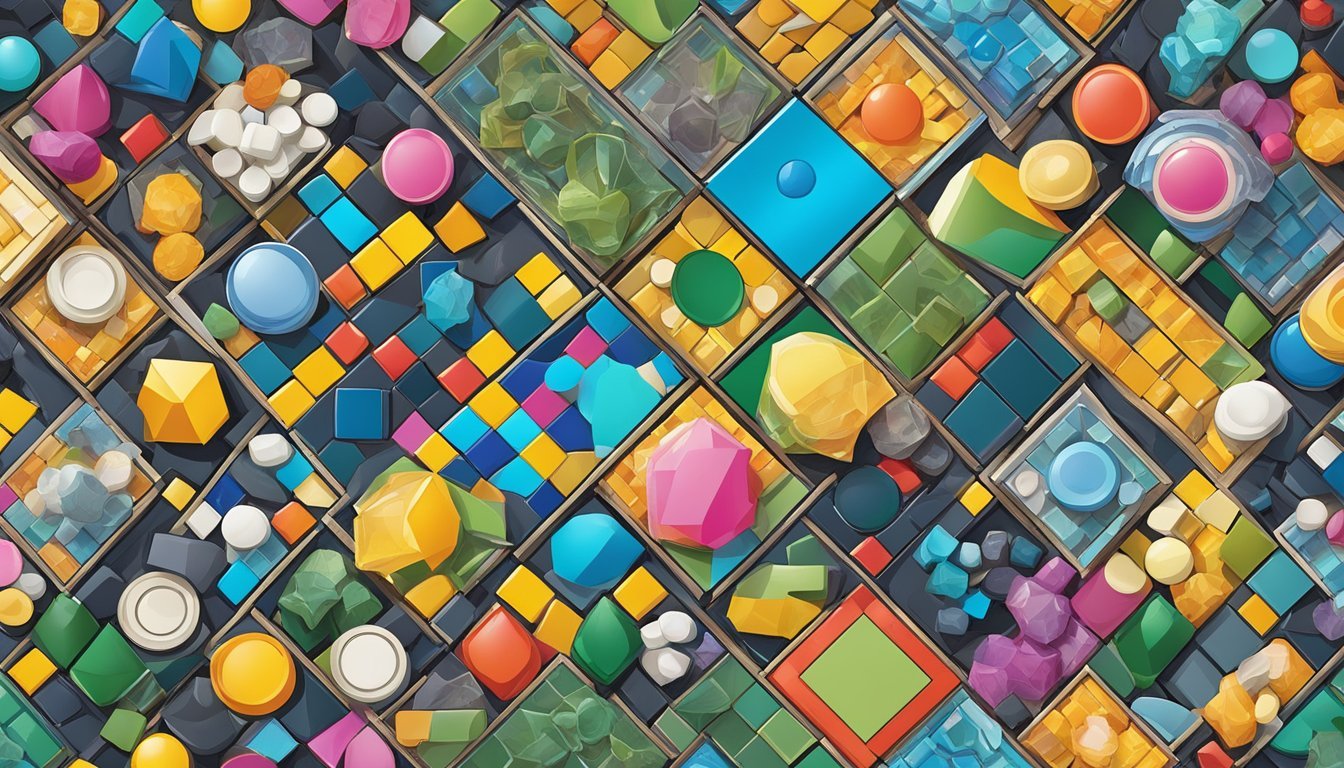
If you have old board games lying around, don’t throw them away.
You can transform those discarded pieces into unique art projects that showcase your creativity.
Start by sorting through the pieces.
You’ll find colorful tokens, dice, and cards that can serve as the foundation for your artwork.
Use them to create mosaics or collage-style pieces.
Consider making a sculpture.
Stack or glue pieces together to form interesting shapes or characters.
Your imagination is the limit here!
Another idea is to use pieces to embellish items.
Decorate picture frames, lampshades, or even furniture.
This gives everyday objects a personalized touch.
You can also create custom wall art.
Arrange game pieces on a canvas to design fun patterns or scenes.
This is a great way to recycle while adding character to your space.
Lastly, think about gifts.
Create unique, heartfelt presents for friends who love games by incorporating these pieces into your designs.
Your art can be both a conversation starter and a way to share memories.
Understanding Found Objects
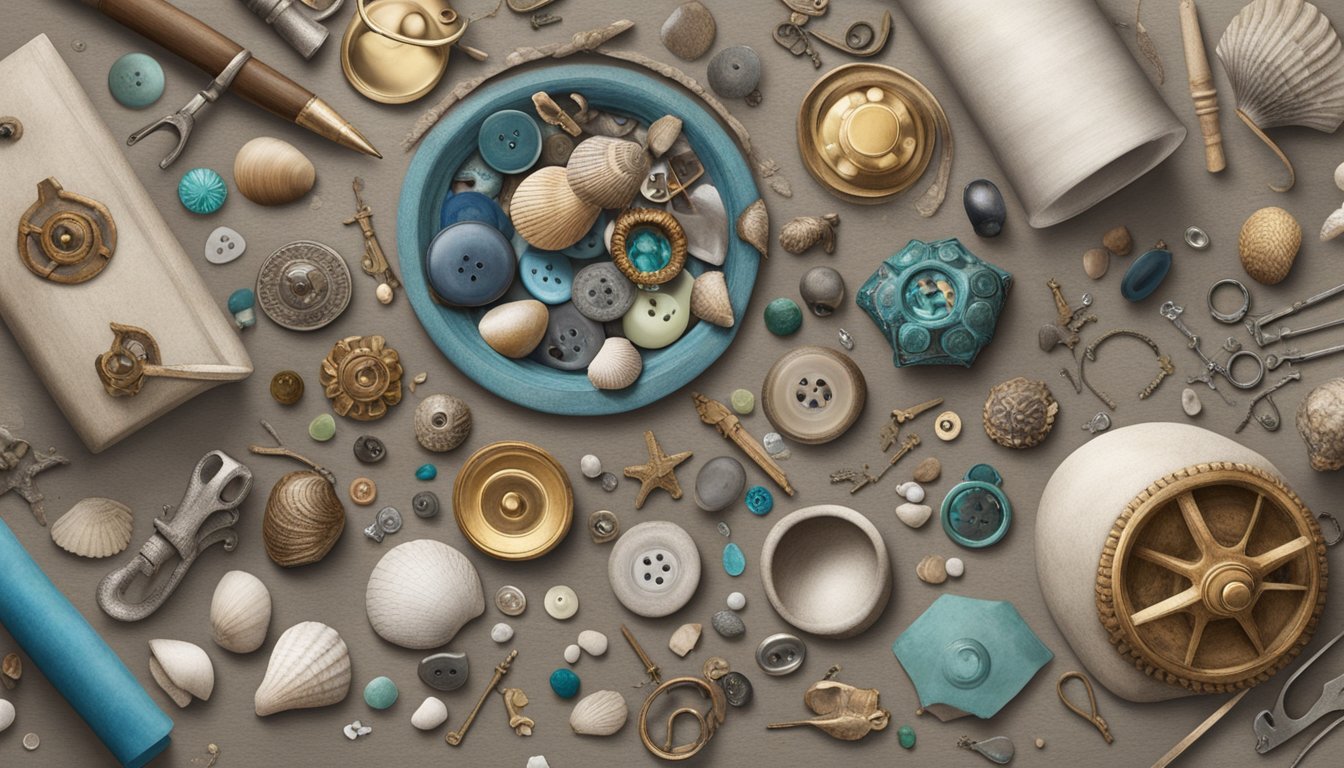
Found objects can transform the way you think about art.
By exploring their history and types, you can discover how everyday items can serve as powerful symbols and creative fodder in your projects.
History and Origins
Found object art dates back to the early 20th century, with roots in movements like Dada and Surrealism.
Artists sought to challenge traditional notions of art by presenting everyday items in new contexts.
Marcel Duchamp’s “Fountain,” a signed urinal, is one of the most famous examples.
This movement emphasizes the idea that anything can be art if placed in a creative context.
The intention behind using found objects is to invite viewers to reconsider their perceptions of ordinary items.
It’s about redefining value and meaning.
Types of Found Objects
Found objects come in many forms.
Here are some common categories:
- Natural Objects: Items like stones, shells, or driftwood.
- Synthetic Objects: Man-made items like plastic bottles, old toys, and discarded furniture.
- Vintage or Antique Finds: Old tools, books, or household items with stories.
Each type can add a unique narrative or texture to your art.
The key is to look for materials that resonate with you and incorporate them in a way that reflects your vision.
Experimenting with different types will open up creative possibilities as you create art that is distinctive and meaningful.
Incorporating Found Objects Into Art
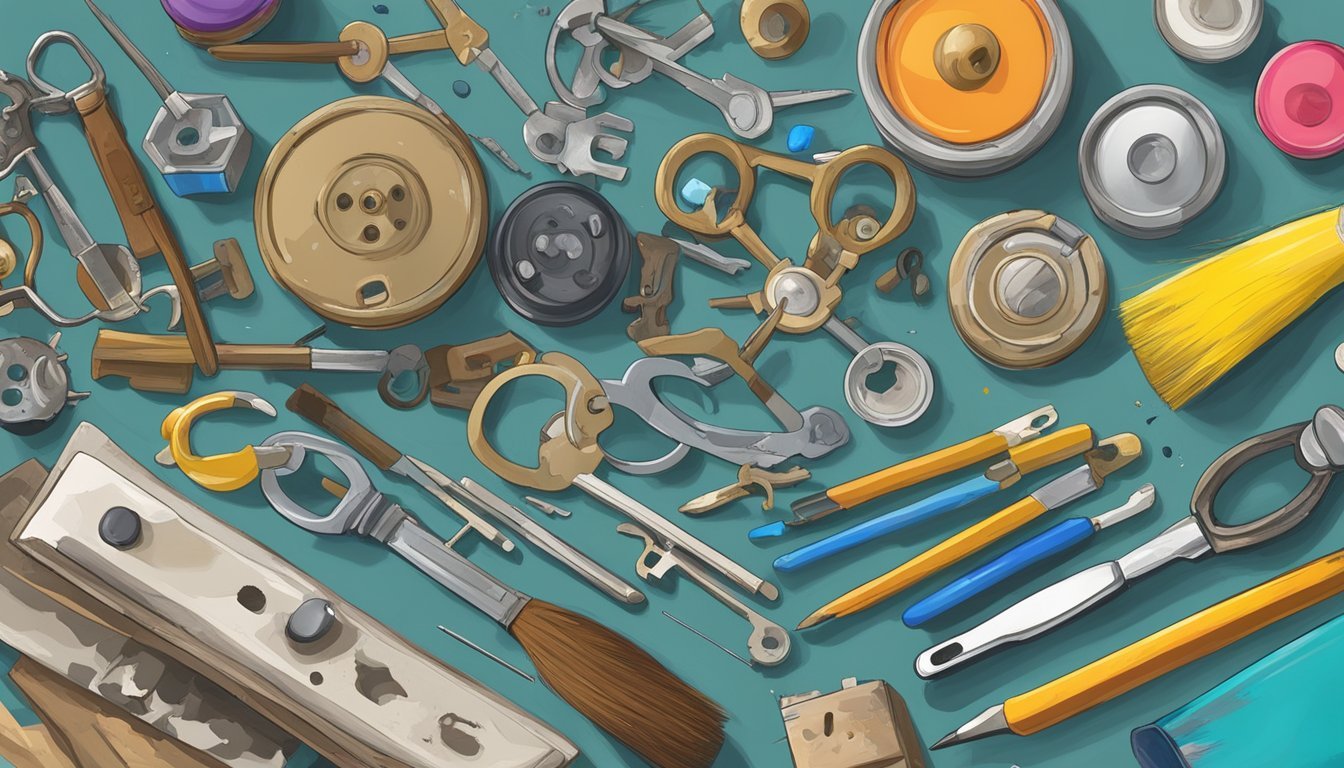
Using found objects in your art can bring a unique flair and personal touch to your projects.
This approach not only showcases creativity but also allows for the exploration of themes and materials in inspiring ways.
Techniques and Methods
To start incorporating found objects, begin by gathering materials.
Look for items like old tools, broken toys, or discarded furniture.
Make a list of these objects and think about their forms, textures, and colors.
When creating, consider different attachment methods.
Basic adhesives like Elmer’s glue work well for light materials.
For something sturdier, use hot glue or super glue.
You can also manipulate objects with paint or thread to enhance aesthetic appeal.
Experiment with layering and combine found objects with traditional media.
For instance, a vintage button could embellish a canvas, or an old-frame could serve as a backdrop for a mixed-media piece.
Don’t hesitate to abstractly arrange items to convey emotions or tell a story.
Inspiration and Ideas
Let your surroundings spark your creativity.
You can browse local thrift stores, craft fairs, or even your living space for inspiration.
Pay attention to everyday items that can be transformed, like an empty bottle or worn-out shoes.
Think of themes that resonate with you.
Perhaps you want to highlight environmental concerns or nostalgia.
For instance, using rusted metal can symbolize aging or decay.
Embrace the concept of “trash to treasure” where mundane objects have potential to create art.
Jot down ideas, or create a mood board using images of completed projects.
This can help you visualize and refine your concepts.
Mixing emotions with tangible items creates a meaningful piece that reflects your identity.


